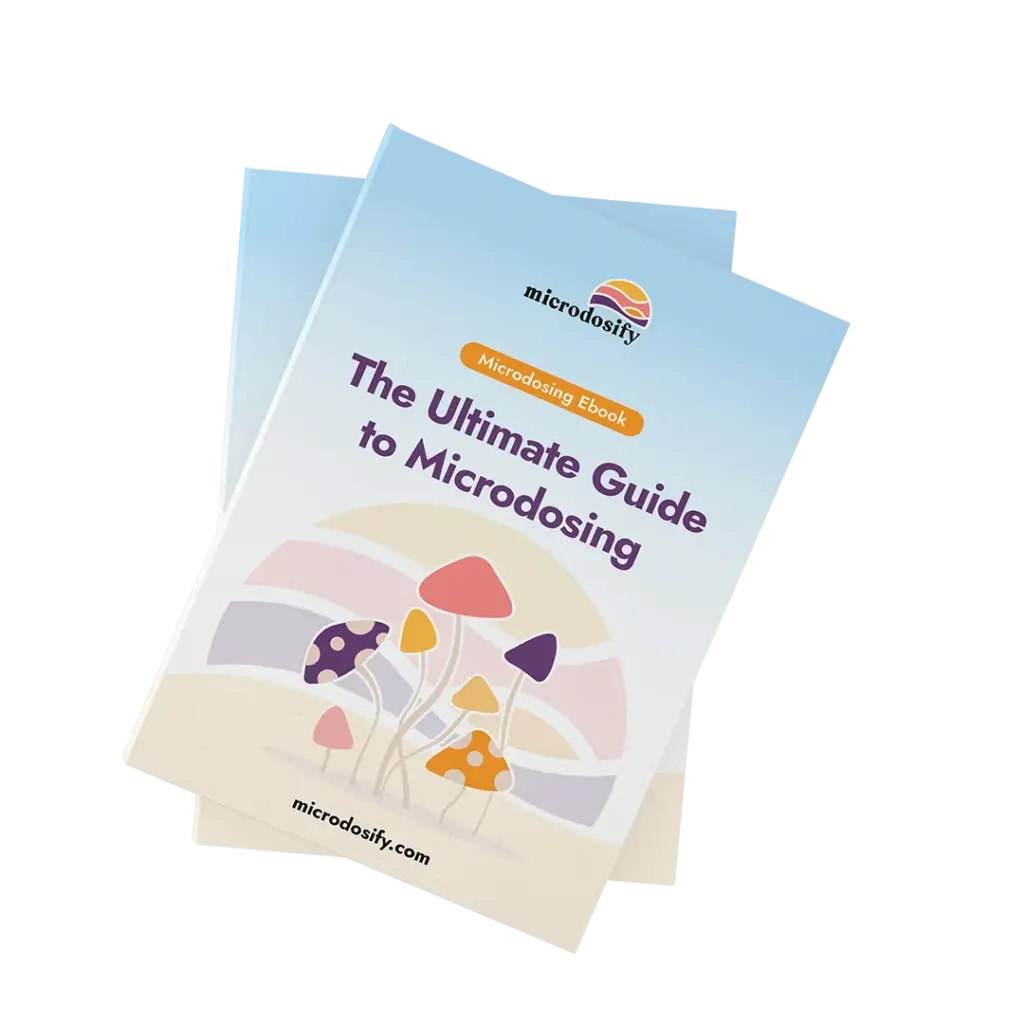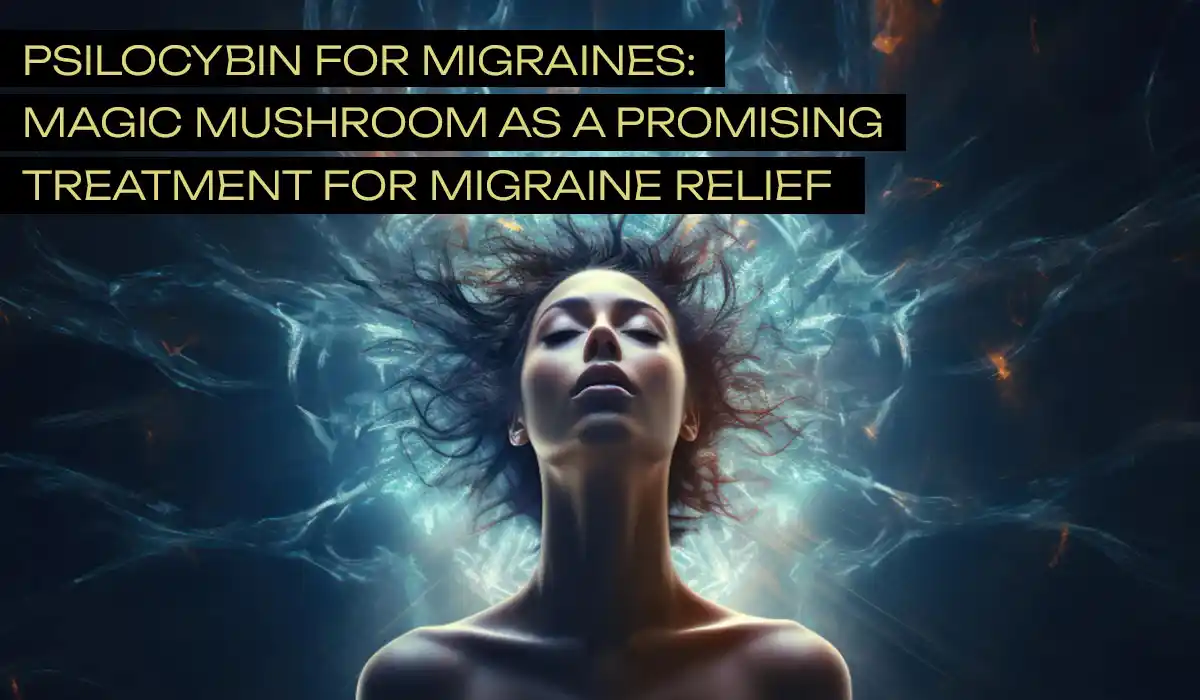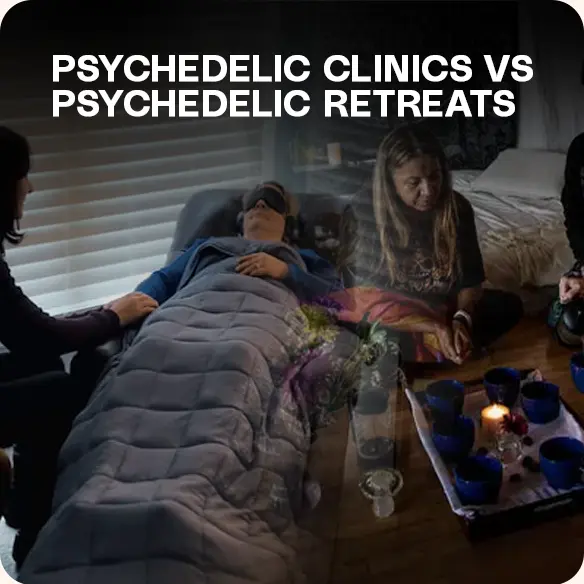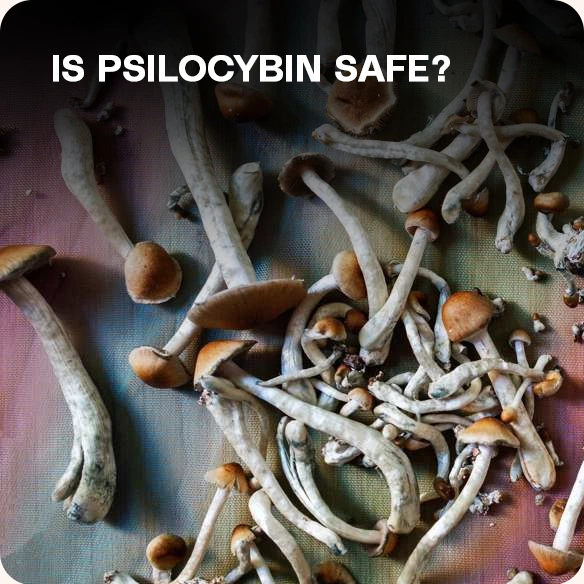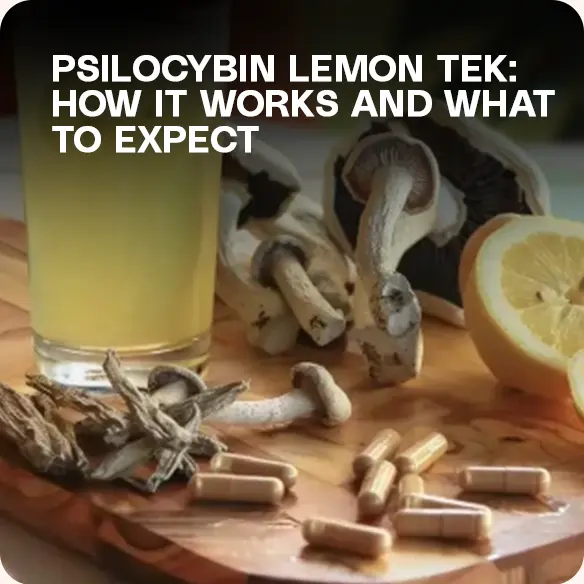The Challenge with Migraines: Migraines can really turn your day—or even week—upside down. Traditional treatments don’t always cut it, leaving many searching for more effective solutions.
Psilocybin’s Potential: Emerging research is shining a light on psilocybin, a natural compound found in some mushrooms, with the power to transform. Studies hint at its potential to not just ease but provide a lasting shield against migraines.
Research Highlights: Data from clinicaltrials.gov and exploratory studies are paving the way, suggesting that psilocybin could offer a safe and enduring way to prevent migraines. This isn’t about a temporary fix but a hopeful glimpse into long-term wellbeing.
For anyone who’s felt the weight of migraines, the journey toward finding relief can be daunting. Psilocybin represents a new chapter in this journey—a chapter filled with promise and backed by research. As we continue to explore and understand its benefits, we step closer to potentially turning the page on migraines for good.
Let’s find out more!
What are migraines?
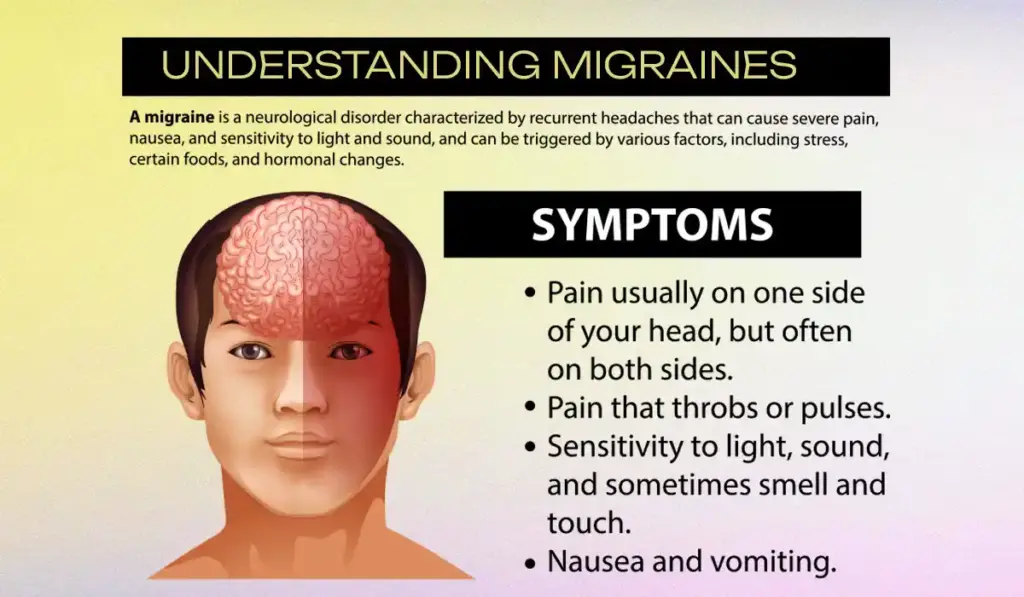
There are three main types of migraines including classic (with aura), vestibular, and common (without aura)
- Classic Migraine (Aura Migraine): Visual or sensory disruptions (auras) precede or accompany headache. Auras can include flashing lights, zigzag lines, tingling, or speech difficulties.
- Vestibular Migraine: Characterized by dizziness, vertigo, and balance issues. Auras in vestibular migraine affect the vestibular system, which controls balance and spatial orientation. Nausea and concentration problems may also occur, and headaches can be present in some cases.
- Common (without Aura): This is the most frequent type of migraine, affecting around 70% of people with migraines. It lacks the aura symptom but typically involves head pain, often throbbing or pulsating, along with other possible symptoms like nausea, sensitivity to light and sound, and neck pain.
Limitations in Current Medical Treatment for Migraines
The current treatments for migraines have drawbacks, including potential side effects like drowsiness, nausea, and cognitive impairment, making them less suitable for some individuals. Moreover, the variability in individual responses to these medications underscores the necessity for more tailored and precise strategies in the treatment of migraines.
Psilocybin for Treating Migraines
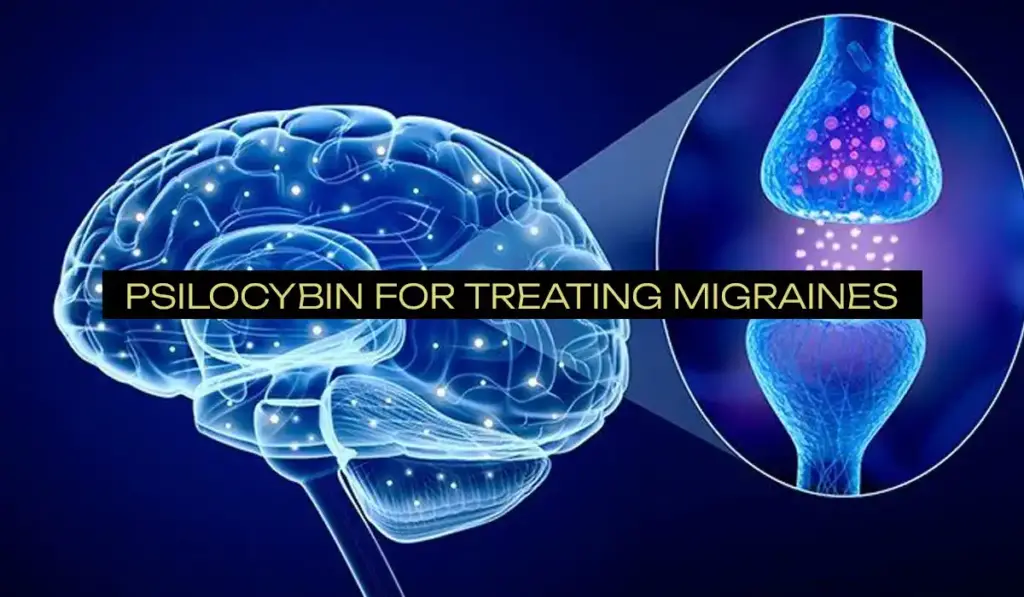
Serotonin plays a role in regulating several bodily functions, and low levels have been linked to an increased risk of migraines. Psilocybin, a compound found in magic mushrooms, interacts with serotonin receptors in the brain, and researchers are exploring its potential therapeutic effects on various conditions, including migraines.
In a recent study featured in the “Headache” journal in 2022, researchers gave 10 migraine sufferers either placebo or a single dose of psilocybin. Those who received psilocybin saw a notable improvement in their condition, including fewer migraine days each week, a reduction in the intensity of migraine attacks, and less disruption to their daily lives due to migraines. What’s more, the need for traditional migraine relief methods decreased significantly in the psilocybin group.
These results suggest that psilocybin has the potential to offer a new avenue of hope for those seeking to manage their migraine symptoms more effectively; however the exact mechanisms by which psilocybin may support migraine relief is still unknown.
How to Microdose Mushrooms for Migraines
Currently, there is no readily accepted protocol for managing migraines with psilocybin. However, most anecdotal reports suggest that most people find relief with a dose that is slightly higher than a microdose, but lower than a recreational dose. This range is sometimes referred to as a mini-dose and usually falls somewhere in the range of 0.5 – 1 grams of dried psilocybin mushrooms.
It is important to note that at this range, most people will experience slight psychedelic effects and should experiment with this dose at work or while driving.
According to the website Clusterbusters.org, an organization dedicated to finding a cure for cluster headaches, most people find that taking a minidose as a preventative method is more effective than taking mushrooms to ease migraine symptoms once they’ve started.
Check out Microdosify Illuminate, which contains 500 mg of Golden Teachers: a perfectly measured mini-dose.
Research on Psilocybin for Migraines
Currently, there is only one published study on psilocybin and migraine relief and one ongoing study on psilocybin for cluster headaches. Preliminary results for the latter are not yet available.
Exploratory Controlled Study of the Migraine-Suppressing Effects of Psilocybin (2022): This small, double-blind, placebo-controlled study found a significant reduction in weekly migraine days and other measures in the psilocybin group compared to placebo. However, it remains a preliminary study with a small sample size, and more research is needed.
Psilocybin for the Treatment of Cluster Headaches (Ongoing): This ongoing randomized controlled trial is currently investigating the potential of psilocybin for cluster headaches.
Anecdotal Experiences and Case Studies
Currently, most information around the potential of psilocybin to treat migraines or cluster headaches comes from anecdotal reports. Reddit has an active community sharing their experiences on using psilocybin to support headache relief. Here are a few:
From user AstralSunday7499: “I found CH relief microdosing. I have kept from excruciating pain on 0.1- 0.15 grams whenever needed. Just came out of 6 weeks cluster using penis envy at those doses, and I never once saw colours or tripped. I also used 1 square of chocolate bar with shroom per headache at the onset. Miraculously chased almost every headache away.”
From user ugoddabkiddin: “2.5 to 3g, then 3 to 3.5g about a week later usually breaks the cycle for me and buys me a year of normalcy. After 22 years of clusters, discovering psilocybin about 5 years ago has been my savior. I’m sure everyone is different, so it might take some trial and error. Good luck.”
It is important to note that psilocybin for migraines is very experimental and anecdotal stories suggest a wide variance in methods that work for people.
Learn more: Microdosing Institute interviews Cluster Buster founder, Bob Wold, on psilocybin use for Cluster Headaches
Legal and Medical Considerations
Psilocybin for treating migraines involves navigating complex legal and medical considerations.
Comprehensive clinical trials are urgently needed. They would establish the safety and efficacy of psilocybin as a viable treatment for migraines. This underscores the importance of carefully addressing both legal and medical aspects.
Read about the benefits of Microdosing Psilocybin here: What are the benefits of microdosing magic mushrooms?
Future of Psilocybin in Migraine Treatment
The future of psilocybin in migraine treatment appears optimistic, with emerging research indicating its potential to reduce the frequency and intensity of migraines.
Ongoing clinical trials are exploring the therapeutic benefits of psilocybin, fostering hope that it may contribute to the development of innovative and more effective treatments for individuals dealing with migraines.
FAQs
What are psychedelics for the treatment of headache disorders?
Psilocybin and other psychedelics like LSD are currently being investigated as a potential alternative to traditional pharmaceuticals for preventing migraines and other headache disorders.
What are the triggers of migraine?
The common triggers of migraine are described below:
| Trigger | Description |
| Stress | Stress response releases chemicals that trigger migraines. |
| Foods (aged cheeses, chocolate, caffeine, processed meats) | Certain foods and drinks contain substances that trigger migraines. |
| Hormonal fluctuations (menstruation, pregnancy, menopause) | Hormonal fluctuations can contribute to migraine onset. |
| Weather changes (temperature, humidity, barometric pressure) | Changes in weather can trigger migraines for some people. |
Final Thoughts on Psilocybin and Migraines
The therapeutic potential of psilocybin for migraines is an emerging area of research, showing initial promise in mitigating symptoms and decreasing the frequency of attacks.
Although preliminary studies suggest a positive impact, comprehensive clinical trials are imperative to ascertain its efficacy, safety, and potential long-term consequences before considering it as a mainstream treatment for migraines.
Further scientific investigation is crucial to establish a clear understanding of the benefits and risks associated with psilocybin in managing migraines.
Sources:
- Top 10 Migraine Triggers and How to Deal with Them | AMF. (2017, July 27). American Migraine Foundation. https://americanmigrainefoundation.org/resource-library/top-10-migraine-triggers/
- Serotonin and Migraine: Biology and Clinical Implications by (2007, November 1) Hamel, E. https://doi.org/10.1111/j.1468-2982.2007.01476.x
- Single Dose of Psilocybin Reduces Migraines for at Least 2 Weeks – Psychedelic Alpha. (2020, November 14). Psychedelic Alpha. https://psychedelicalpha.com/news/single-dose-of-psilocybin-reduces-migraines-for-at-least-2-weeks
- Mindfulness meditation and psychedelics: potential synergies and commonalities. Pharmacological Reports by (2023, November 6) Holas, P., & Kamińska, J. https://doi.org/10.1007/s43440-023-00551-8
- Can Psilocybin Treat Cluster Headache? | American Migraine Foundation. (2023, January 19). American Migraine Foundation. https://americanmigrainefoundation.org/resource-library/can-psilocybin-treat-cluster-headache/
